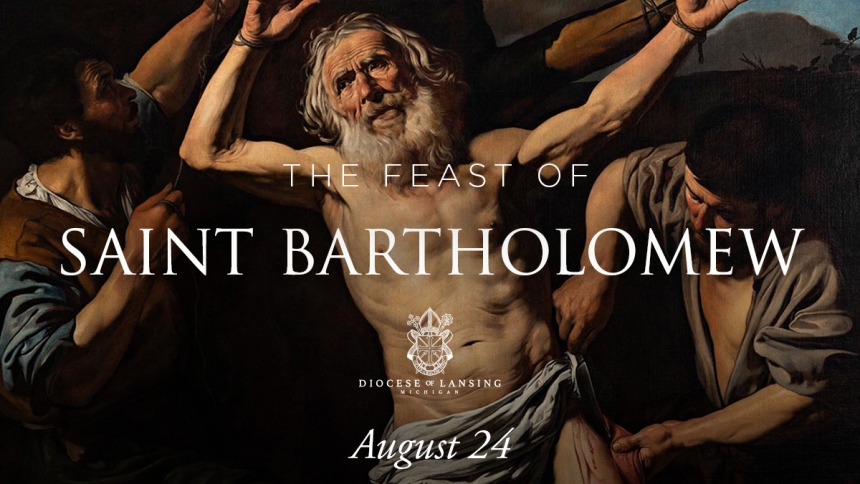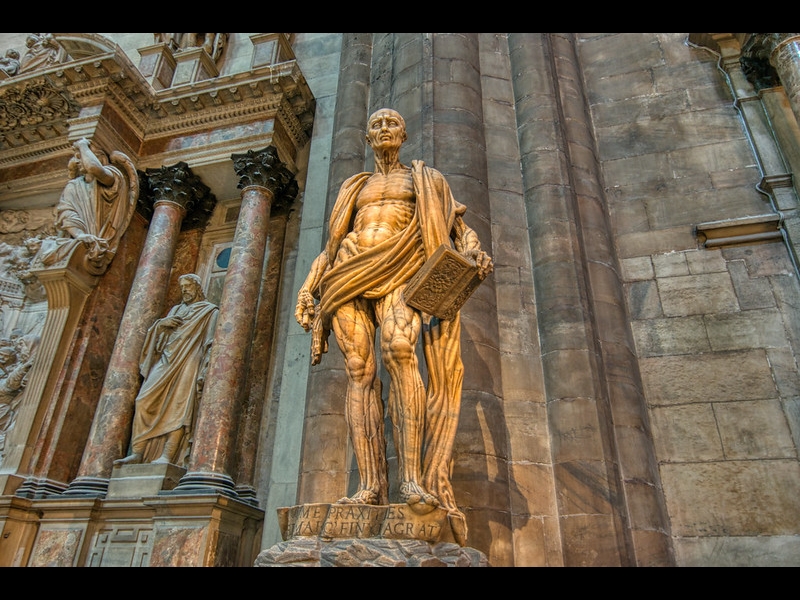
Many moons ago, when I was working for a major bank in their head office in London, England, I used to travel regularly to Milan, Italy, to audit a subsidiary there, writes Sean O’Neill, Editor of FAITH Magazine, the official publication of the Diocese of Lansing, upon the Feast of Saint Bartholomew, August 24.
Every evening I would go to 5 o’clock Mass in the Duomo (cathedral) which was reckoned to be the third-largest church in the world – a kind of Renaissance mega-church. And the Duomo certainly was huge. Walking into the building it was so spacious that it would feel like being outside, inside!
There were many startling and beautiful things in that church to look at, but one evening after Mass, I decided to leave by a different door on the left of the altar. There, just by the door, was a marble statue I had never seen before and as I approached, my steps slowed, and I came to a halt in front of it.
What it depicted was Saint Bartholomew but the shocking thing about the statue is that the figure is flayed and is holding the discarded skin of his body draped over his shoulders, see image below. It was made all the more realistic because the color of the marble, in the gloomy penumbra of the church, looked exactly like skin. I was intrigued and slightly grossed out in equal measure.
Saint Bartholomew was one of the Twelve Apostles. The story goes that after Jesus ascended into heaven, Bartholomew traveled east to India to preach the gospel and ended up in Greater Armenia. According to tradition, he was flayed and beheaded there for converting the king to Christianity. He is often depicted in art flayed and holding his skin. If you study Michelangelo’s Last Judgment on the end wall of the Sistine Chapel, you see him gripping onto the flayed skin – except in that case the skin is the artist’s self-portrait.
What is so remarkable about this saint – apart from his grisly appearance in the Duomo? The same thing that distinguishes all of the apostles. Their fearless proclamation of the gospel in the face of persecution and certain martyrdom. In fact, all of them, except John, according to tradition, were crucified, beheaded, stabbed, flayed, or sawn in half.
This amazing courage is salutary for us and makes us ask the question whether we are too timid to share the gospel openly with family, in the workplace, or with friends. Of course, what motivated the apostles was love. They had encountered God in a very real way, in Jesus, and were determined to follow his Great Commission to preach the gospel and baptize people.
How ready are we to share our relationship with God with other people? Let’s ask Saint Bartholomew to send us even a fragment of his courage and to help us to spread the good news as he did, as Jesus commanded us to do. Saint Bartholomew, pray for us!

